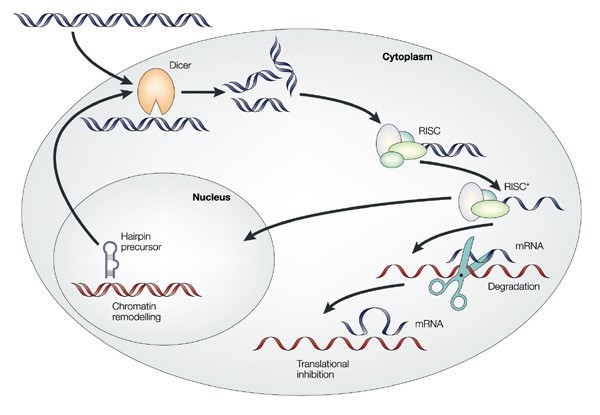Inventors at Georgia Tech have developed and tested a powerful and broadly applicable method for iRNA production, packaging, protection, and delivery. This novel method employs virus-like particles (VLPs) to sequester and package iRNA. The single-step production of VLP-iRNAs, which are VLPs that contain RNA designed for RNA interference activity, offers an effective method for delivery of RNAi molecules to target cells or tissues. Advantages over traditional iRNA synthesis include: lower cost, with high speed and reliability when iRNA is produced in vivo in E. coli; higher RNA expression when sequestered in VLPs; VLPs and IRNA self-assemble into VLP-iRNAs with high specificity; VLP-packaged iRNAs may be single- or double-stranded, and may vary in size; VLPs protect and stabilize the iRNA for extend storage; and, VLP-iRNAs may be distributed in aerosol, liquid, or powder form, and are readily taken up by many cell types.
- Inexpensive, rapid, adaptable, and reliable in vivo system for sequestering and packaging of iRNAs
- Flexible, for long or short, single-stranded or double-stranded iRNA of any sequence
- Efficiently delivers iRNA to biological targets; VLP-iRNAs are readily taken up by many cell types
- Stable product, may be stored for long periods of time and distributed as aerosols, solutions, or powders
- Therapeutics
- Agriculture
- Biofuels
- Basic research use- effective and stable delivery of the target to cells or tissues is required
RNA interference is a revolution in biology that has provided a breakthrough in understanding how genes are turned on and off. Also known as gene silencing, an RNA molecule of appropriate sequence will down-regulate a given gene by preventing a specific messenger RNA (mRNA) from producing a protein. An RNA molecule with interference activity (iRNA) causes degradation of mRNA by complementary base-pairing with the mRNA, with subsequent induction of mRNA cleavage by accessory proteins. Targeted gene silencing has important applications in medical therapeutics, biofuels, agriculture, and basic research. However, a primary limitation in commercial application of current RNA interference technology is in effective and efficient delivery to the target tissues in vivo without compromising target silencing activity.

